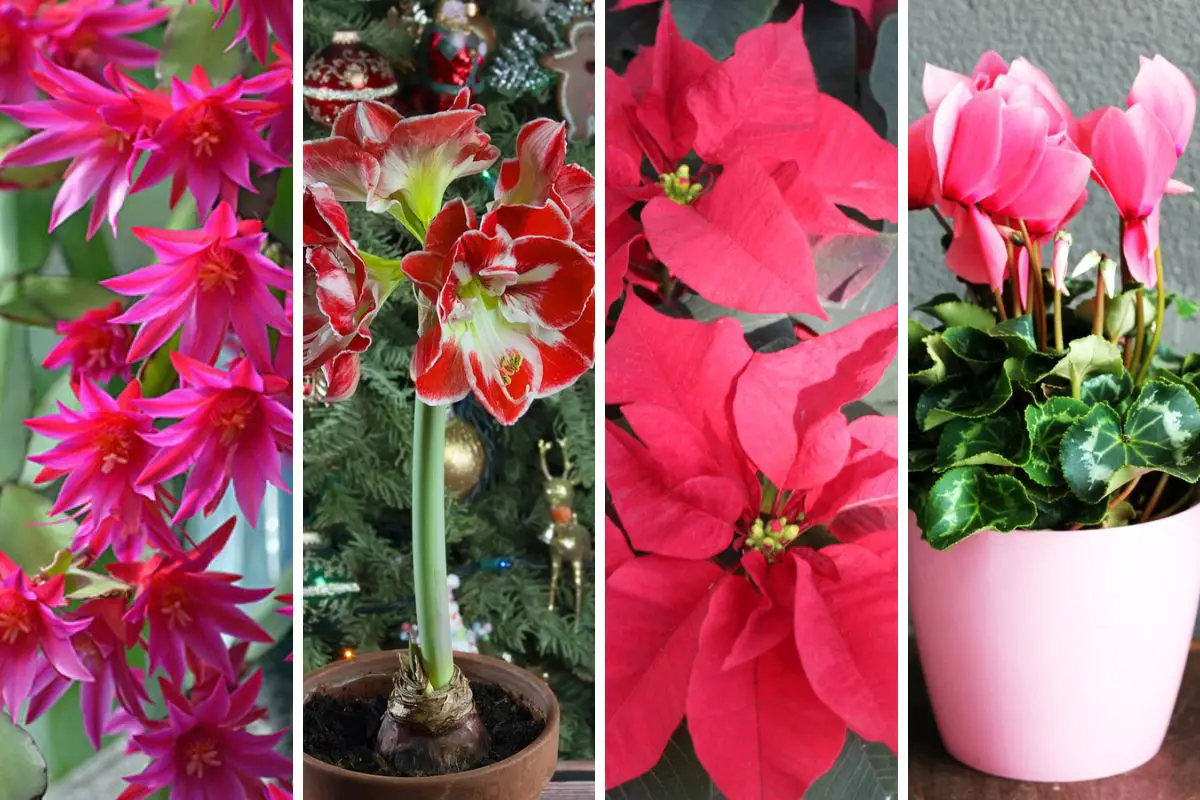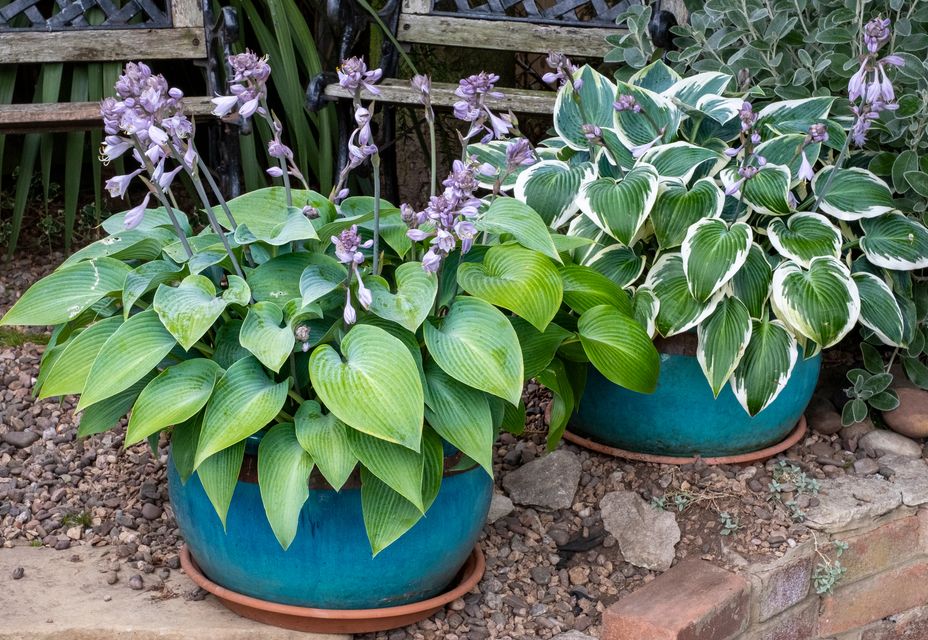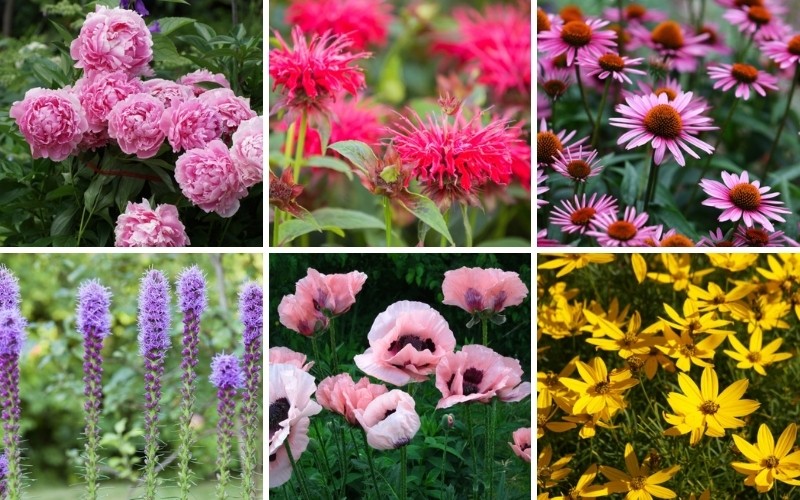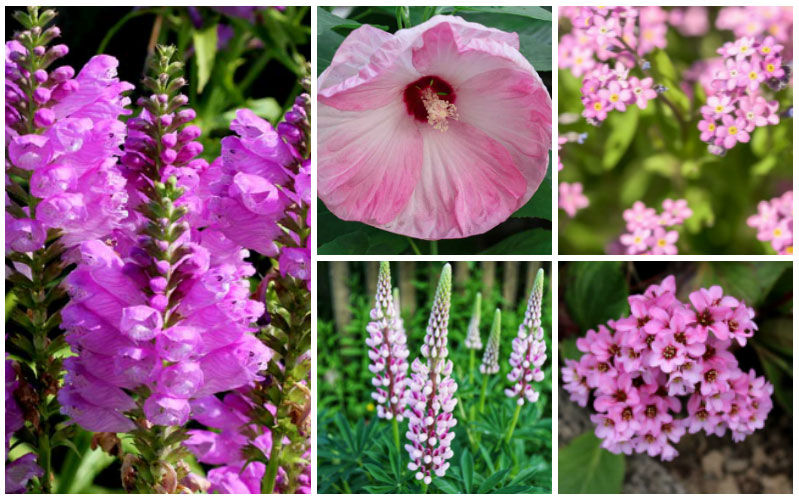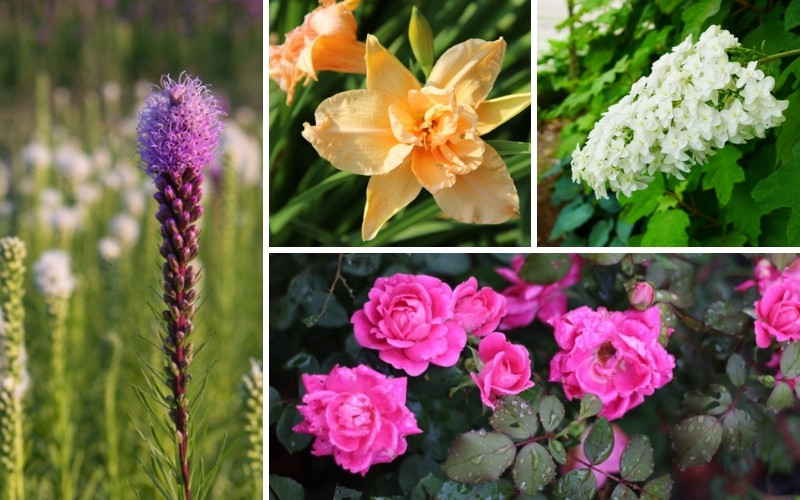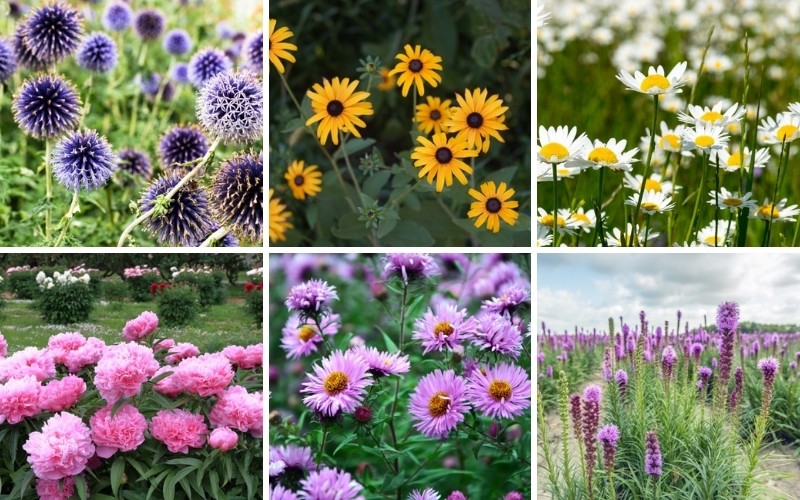
Massachusetts includes USDA plant hardiness zones 5a through 7b making it a suitable location for a wide range of perennials.
While the perennials listed below should do well through most of the state, bear in mind that hardiness and lighting needs can vary between cultivars of the same plant. Always check the plant identification label, or consult a reputable source, to make sure the variety you want to grow is hardy in your location.
False Sunflower (Heliopsis helianthoides)
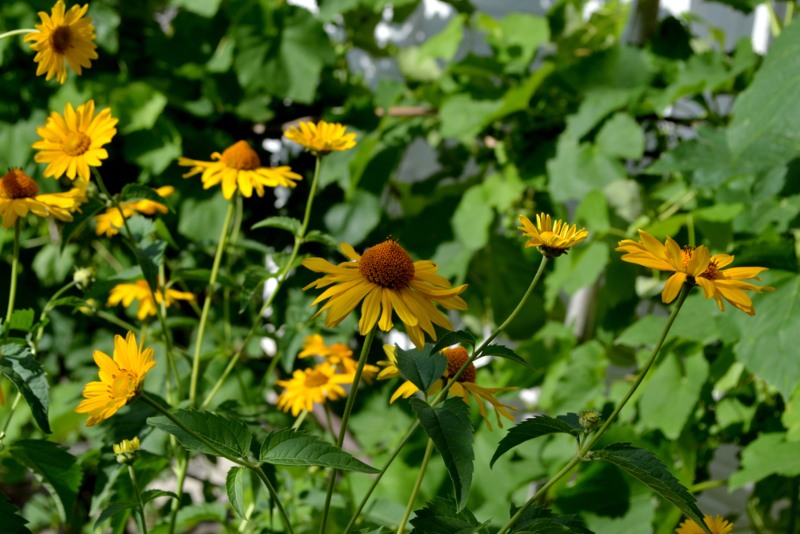
This perennial sunflower brings the cheer and bright color of sunflowers to your garden without the need to replant them every year. Although they are smaller than traditional sunflowers with daisy-like blooms that measure 2 to 3 inches across, they bring all the color with their sunny golden blooms. False sunflower blooms from early summer through to the frost. It prefers full sun and average well drained soil and is hardy in USDA plant hardiness zones 3 through 9.
Daylilies (Hemerocallis)
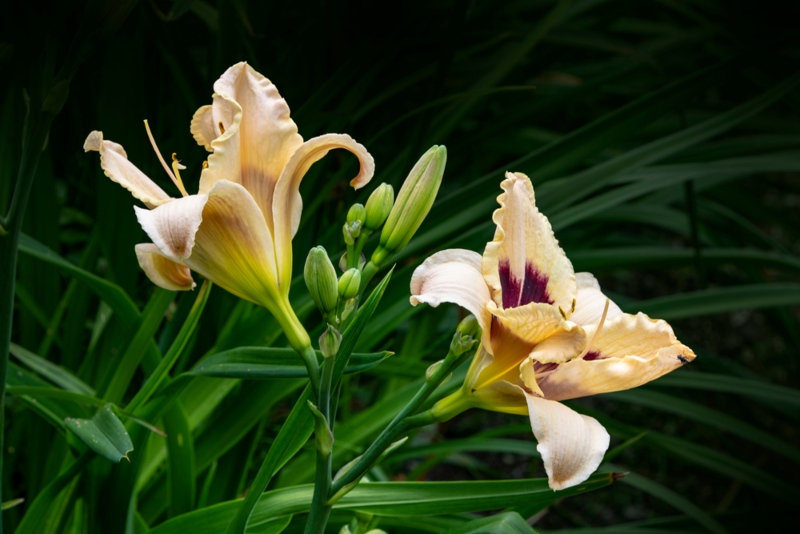
Daylilies are a must-have in the perennial bed as they produce large showy blooms in a wide range of colors. These impressive flowers last for only a day then shrivel and fade, but there are so many buds and opening flowers each day no one would ever guess. Daylilies are drought tolerant and will grow in either full sun or partial shade. They bloom in mid-summer and keep up the show for weeks. Daylilies are hardy is USDA plant hardiness zones 3 through 9.
Shasta Daisy (Leucanthemum x superbum)
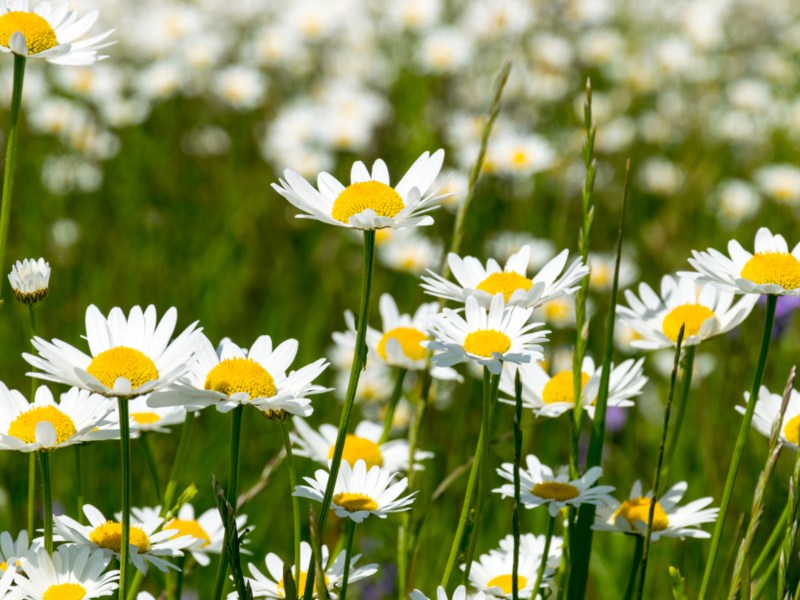
Shasta daisies produce a showy display of pure white flowers on deep green foliage. The flowers may be single or double petaled and come in a variety of growing habits depending on the cultivar. Most a mounding and bloom from early to mid-summer through the fall. These hardy plants are easy-to-grow and thrive in either full or partial sun. They are hardy to USDA plant hardiness zones 5 through 9.
Peonies (Paeonia)
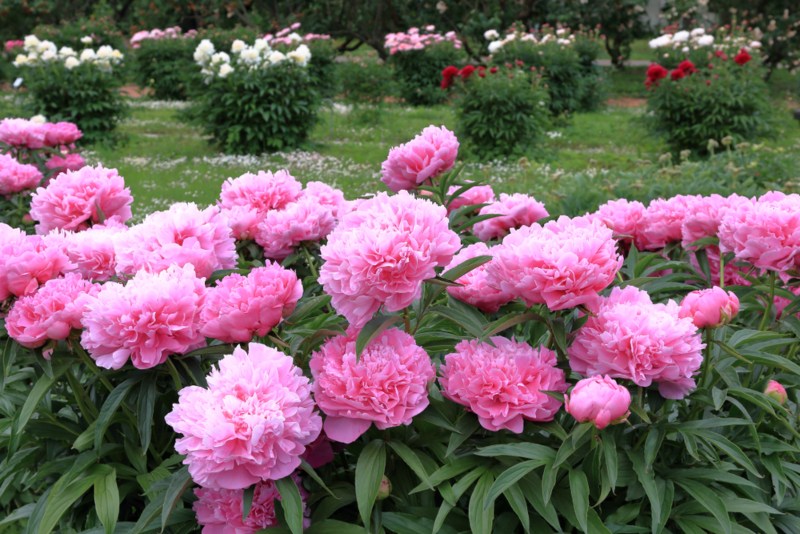
Peonies bring the garden alive in late spring with their showy display of large fluffy blooms that range from white and pastel pinks to deep rose and red with many delightful variegated varieties too. They are prized for their beauty and intense fragrance making them a favorite in floral and bridal displays. These hardy perennials require little care other than yearly staking to keep the plants erect and to support the weight of the blooms. They prefer full or partial sun and thrive in USDA plant hardiness zones 3 through 9.
Garden Phlox (Phlox paniculata)
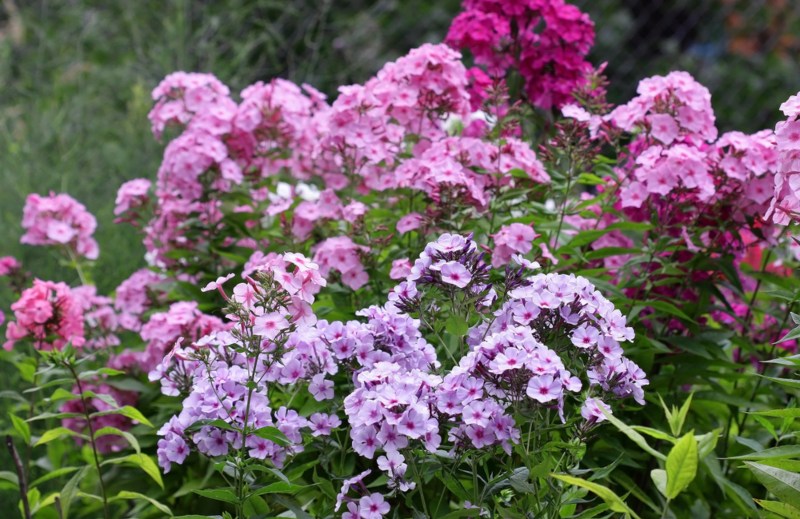
Garden phlox are an old-fashioned favorite prized for their showy globe-shaped flower heads comprised of hundreds of tiny flowers. Colors range from the traditional white and magenta to rich shades of lavender, pink, rose and red with many impressive bicolors, too. Their beauty is surpassed only by their heady fragrance that fills the air when they are in bloom from mid-summer until fall. They attract bees, hummingbirds and butterflies and thrive in full to partial sun. Phlox are hardy in USDA plant hardiness zones 4 through 8.
Black-Eyed Susan (Rudbeckia fulgida)
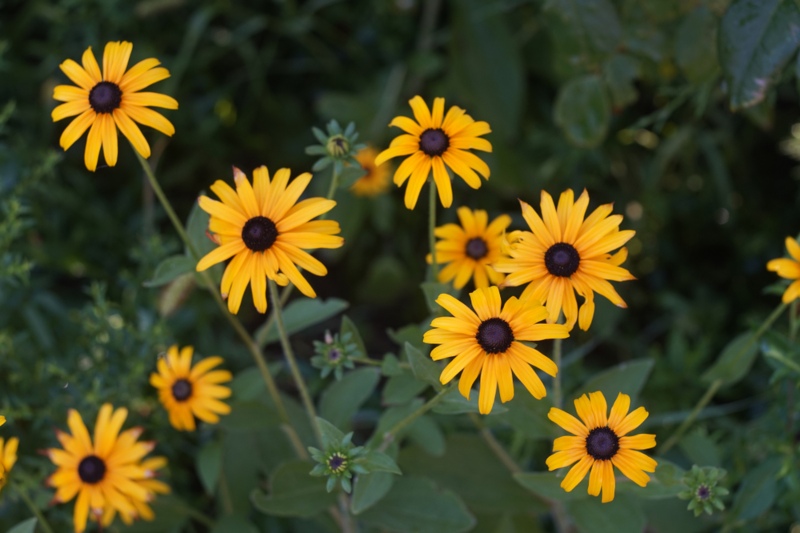
Black-eyed Susan’s produce a profusion of warm yellow-orange flowers with a distinctive dark eye in late summer and continue to bloom well into the fall. These hardy perennials are easy-to-grow and tolerate drought well. They prefer full sun, but will grow in partial shade in average to dry soil. They are hardy in USDA plant hardiness zones 3 through 9.
New England Asters (Aster novae-angliae)
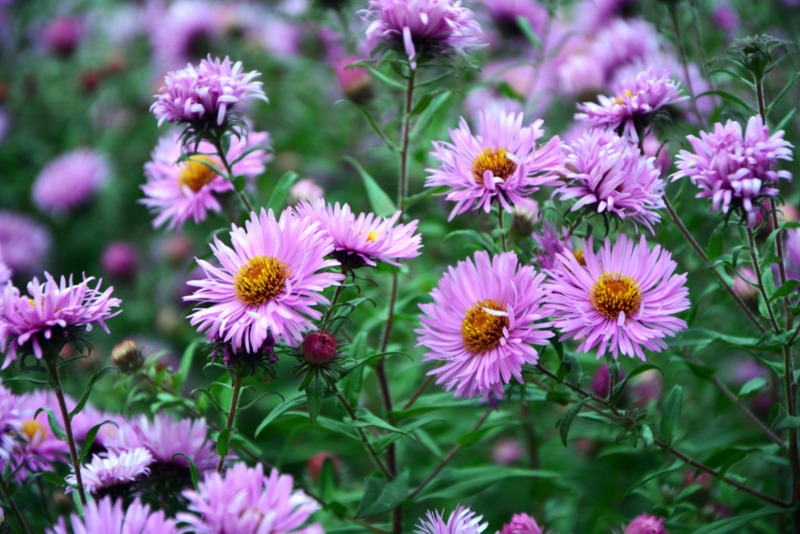
For a last season show of color, try adding New England asters to your perennial bed. These daisy-like flowers come in a variety of colors from nearly white or pastel pink to lavender and deep shades of purple. Attracting both bees and butterflies, asters bring the garden alive with color and movement in late summer and keep on blooming well through the fall. They thrive in average to poor soil and is relatively drought tolerant. New England Asters prefer full sun but will grow happily in partial sun. They are hardy in USDA plant hardiness zones 3 through 8.
Columbine (Aquilegia)
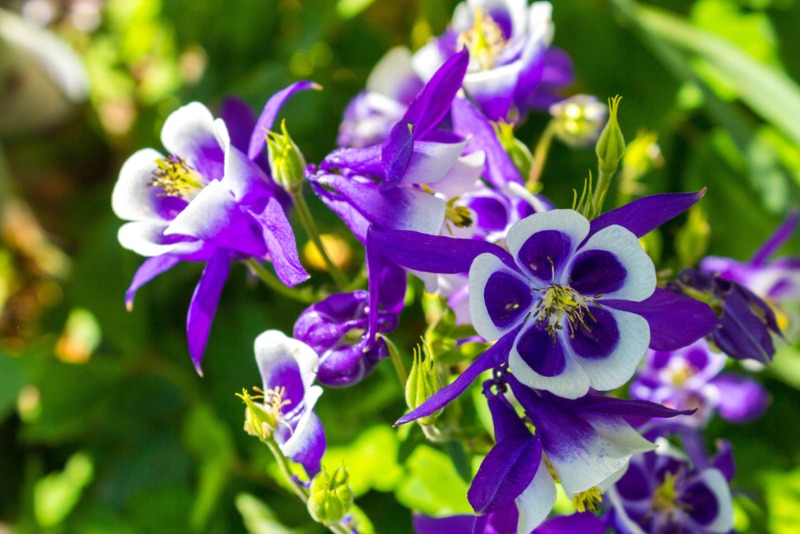
Columbine, also known as Granny’s Bonnet, is a unique flower with its lacy foliage and bell-shaped flowers that range in color from white and pastel pink to beautiful shades of rose, red and purple. It blooms in late spring or early summer and keeps up the show for a month or more. Columbine prefers full sun to partial shade and grows well in average soil. It is hardy in USDA plant hardiness zones 3 through 9.
Golden Marguerite (Anthemis tinctonria)
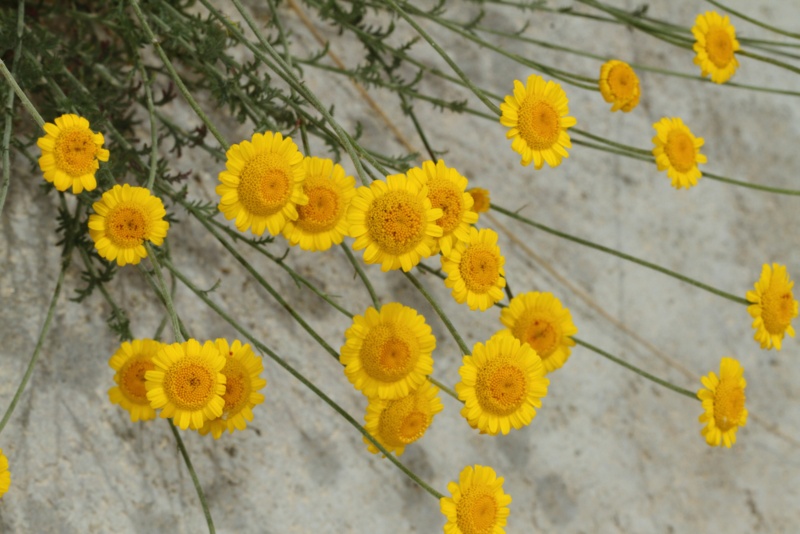
Golden Marguerite adds a lightness to the perennial bed from midsummer into the fall with its bright golden-yellow flowers atop lacy green foliage. This plant grows to heights of 1 1/2 to 2 feet making it ideal for the front of the bed where it can show off its brilliant blooms. It prefers average well-drained soil but tolerates drought. It needs full sun for at least 6 to 8 hours a day and is hardy in USDA plant hardiness zones 3 through 8.
Yarrow (Achillea)
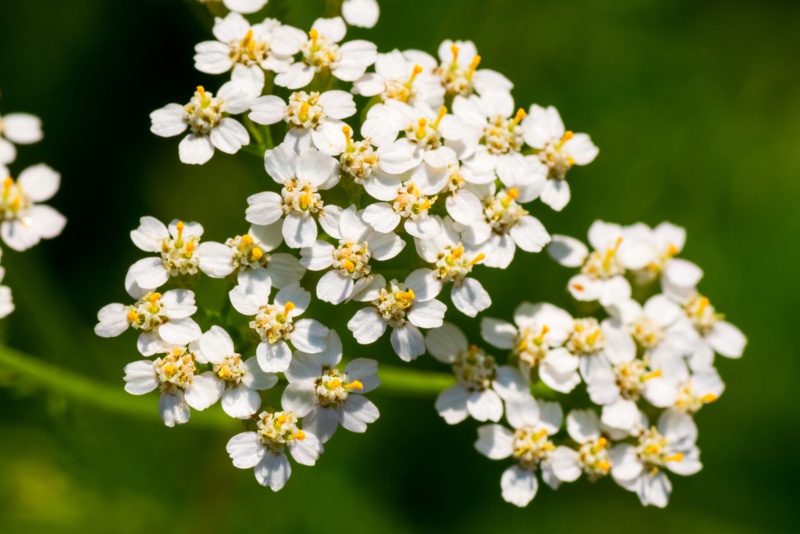
Yarrow produces flatten heads atop feathery green foliage. Flower color ranges from traditional golden to white, pastel yellows and golds to bright red and orange. This fragrant plant attracts bees and butterflies and grows to heights of 2 to 3 feet. It prefers sandy, well-drained soil and tolerates drought. Yarrow does best in full sun and blooms from early summer to fall. It is hardy in USDA plant hardiness zones 3 through 9.
Gayfeather (Liatris spicata)
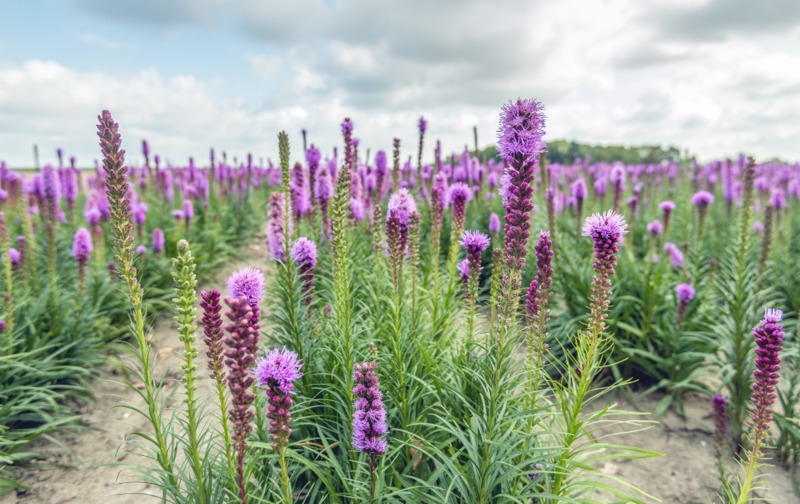
Also known as blazing star, gayfeather produces tall spikes covered with fluffy little flowers in colors that range from white and purple to rose and red. The flowers open from the top down creating a dazzling display when it is in full bloom. Gayfeather blooms in early to midsummer and lasts for 4 weeks or more. Foliage remains attractive even after the flowers have faded transforming to a lovely bronze in the fall. Gayfeather grows to heights of 2 to 4 feet and prefers full sun. It is hardy in USDA plant hardiness zones 3 through 9.
Globe Thistle (Chinops)
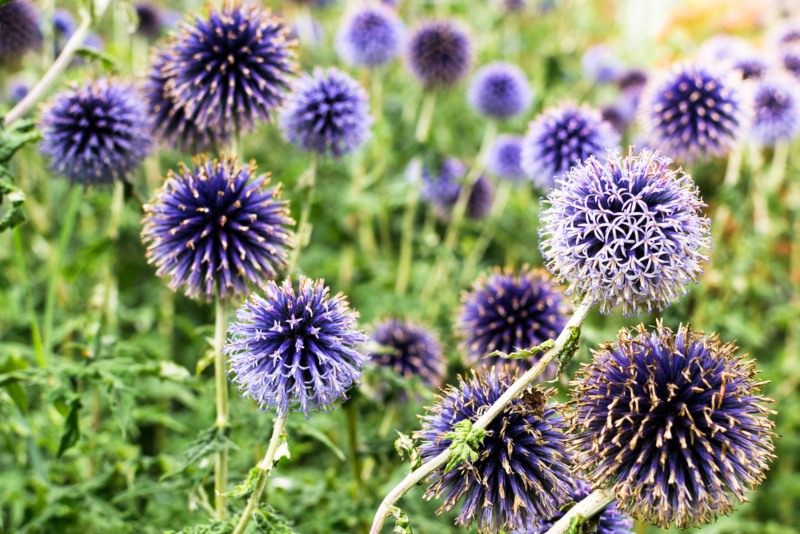
Adding globe thistle to your perennial bed is a great way to add contrast and texture to the bed. These golf ball sized globes of color range from pure white to intense blue. Blooms are held above thistle-like foliage and sway in the breeze. It blooms from July to August and reaches a height of 2 to 4 feet. It thrives in average, well-drained soil and full sun. It is hardy in USDA plant hardiness zones 3 through 8.
Conclusion
Establishing a new perennial bed (or adding to an existing one) in Massachusetts can be a lot of fun as there are so many wonderful flowers to choose from. Keep in mind that many new perennials do not produce well the first season and take a year or two to reach their full potential. With patience and careful selection of perennials that will do well in your location you can enjoy these striking flowers for years to come.

